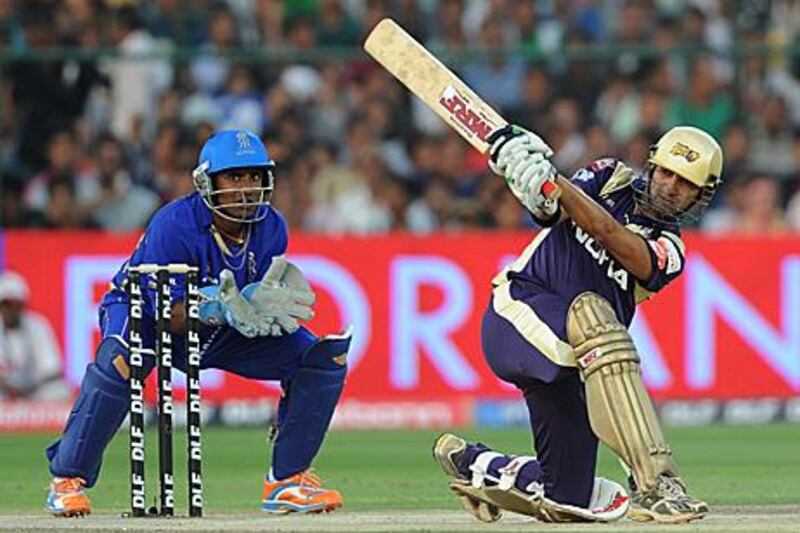Kerry Packer, the Australian media tycoon whose ambition and financial muscle led to the creation of World Series Cricket (WSC) in 1977, was used to doing as he pleased.
The normal rules did not appeal to him. Those involved with what was then seen as a "rebel" series have some fantastic anecdotes about the mans maverick ways.
The best of them is the clock story. "Australia were playing West Indies in a game where it became obvious the local council deadline for the lights wasn't going to allow a finish to a thrilling encounter," wrote Ian Chappell in an article last year.
"A WSC executive tentatively approached Packer with the bad news and was told the solution is simple: 'Turn off the power to the scoreboard and then the digital clock won't be visible.' While this was a logical solution to a successful businessman used to getting his own way, it caused great confusion on the field."
Three decades later, Lalit Modi, another iconoclast in cricket terms, decided to move the Indian Premier League (IPL) to South Africa at the 11th hour, having been told that the Indian government - busy with preparations for the national elections - could not guarantee security for the event.
Modi liked to style himself as a pioneer, but all that he did was merely extend the path that Packer had first cleared and walked down in the days when players had to work a day job to make a living.
The IPL has made players fabulously rich. The top earners take home as much per week as Europe's top footballers.
That is largely possible because of the extraordinarily lucrative television rights deal that the Indian board has signed, with slices of the pie going to each of the 10 franchises. But until Packer came along and changed the way we view cricket, no one was aware of what telecasts were worth.
There was also no concept of a fair wage. Cricketers, like their football counterparts before the 1960s, were treated like indentured labour, expected to play for little reward and then fade away quietly.
In Mike Coward's superb Rookies, Rebels and Renaissance, a look at the aftermath of the Packer revolution, Michael Holding talks about the sense of disbelief when he was offered A$25,000 (Dh98,076) to play World Series Cricket.
For each of the four home Tests against India the previous season, he had been given US$200 (Dh734).
After the deal with Packer was signed, he went to his bank to have his savings account book updated. "In those days, they had this big machine that they pushed the book in and, clang, clang, clang, and something is printed and it pushes the book back out.
"Out comes the book and for the first time in my entire life there's a comma [denoting a four-figure sum] in my savings account book!"
How times have changed for the better. Gautam Gambhir was the costliest player at the IPL auction last January (US$2.4 million - Dh9,812m)) and he has made $5,338 for every run scored (289) so far this season. That's a lot of clang clang.
Back in 1977, cricketers gravitated to the Packer camp because they had nowhere else to go.
"The fact you had more than 50 players from all around the world who had this secret, and they kept it, that's amazing," said Chappell in the book.
"The fact that it was kept a secret for so long, I think is an indication of how hacked off the players were with their lot."
One of the biggest supporters of World Series Cricket, who went on to become one of its public faces, was Richie Benaud, the astute captain-turned-peerless commentator.
"The players suddenly felt that they had been given one opportunity and the opportunity may well never come again," he said. "They had an organisation behind them that would stand by them. The general feeling always was 'we mustn't let this chance slip'."
They didn't, playing initially at some nondescript grounds on dubious pitches, wearing vivid yellow and pink kits and motorcycle helmets against some of the fastest bowlers the world has ever seen. In every sense, they were the pioneers.
"All the things that have come from World Series Cricket have made it a livelier game," Benaud said.
"The televising of the game, the number of new people watching cricket on television, particularly women who have become intensely interested in the game, coloured clothing, all those things.
"You wouldn't have thought of them before 1977 and now you would never dream of doing without them."
Packer's baby was eventually accepted by the establishment.
These days, Australian cricket without Channel Nine's coverage is unthinkable.
And each four hit and wicket taken during the IPL is a tribute of sorts to the man who added colour and light to a century of cricket tradition.





